
Posts Tagged: pumpkins
Happy (Bee, Butterfly, Dragonfly) Halloween!
The Bohart Museum of Entomology at the University of California, Davis, won't be the site of a Halloween party this year due to the COVID-19 pandemic precautions. But oh, the memories! "Friends of the Bohart" annually host the fun-filled event. Members of the organization and their...
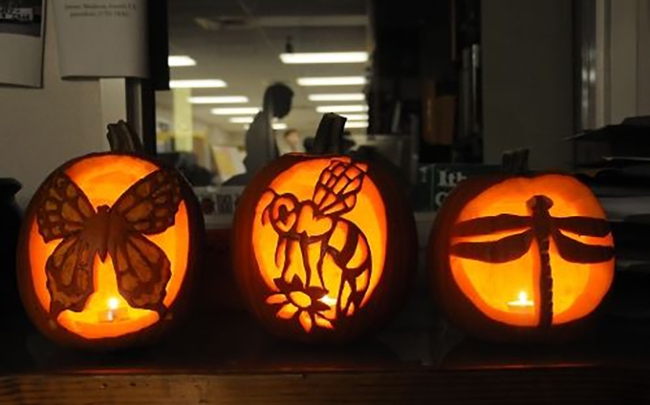
These three jack o'lanterns represent a butterfly, bee and dragonfly. They were among Halloween decorations at the Bohart Museum of Entomology's annual Halloween parties. (Photo by Kathy Keatley Garvey)
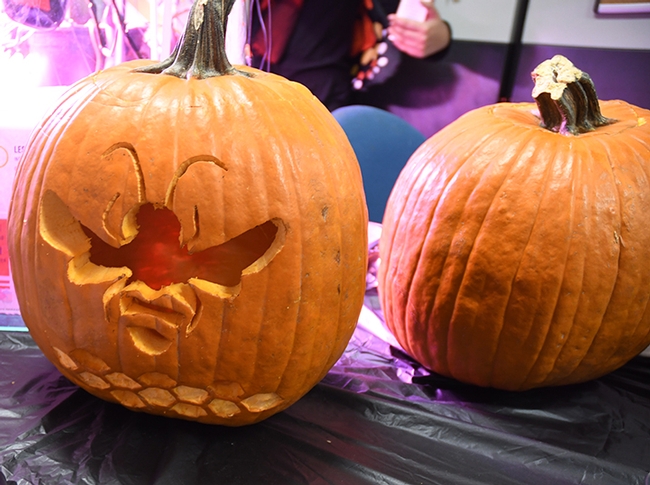
This carved pumpkin celebrates the order Hymenoptera (an order that includes bees, wasps and sawflies). Doctoral student Charlotte Alberts carved this one of a bee and honeycomb. (Photo by Kathy Keatley Garvey)
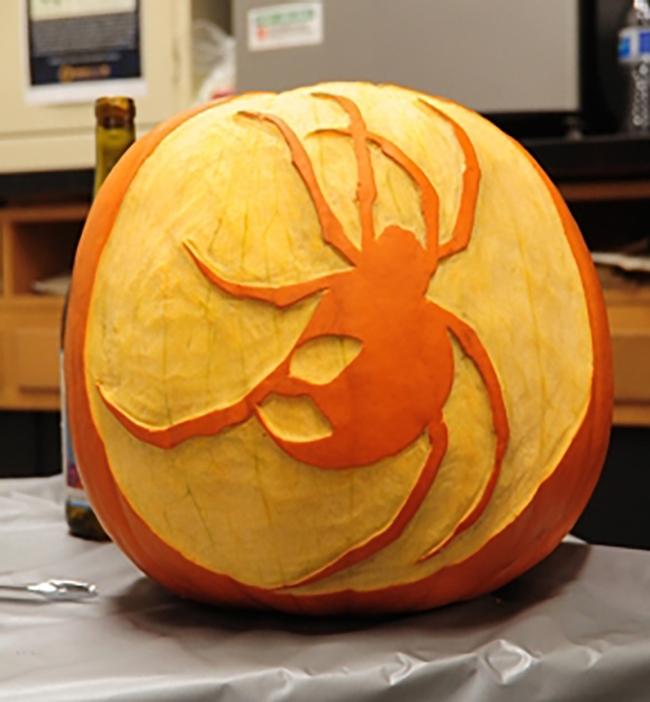
A spider graces this Bohart Museum of Entomology pumpkin. (Photo by Kathy Keatley Garvey)
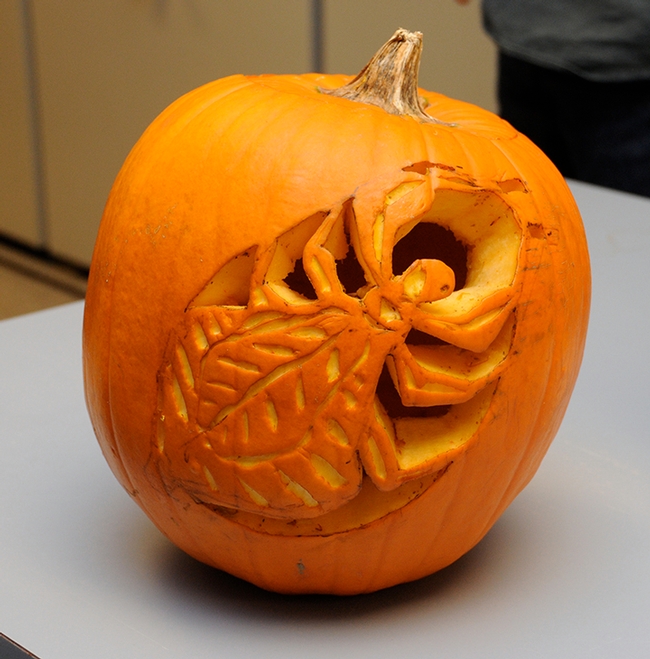
What, you've never seen a pumpkin with a bedbug theme? This is one of the pumpkins featured at a previous Halloween party at the Bohart Museum of Entomology. (Photo by Kathy Keatley Garvey)
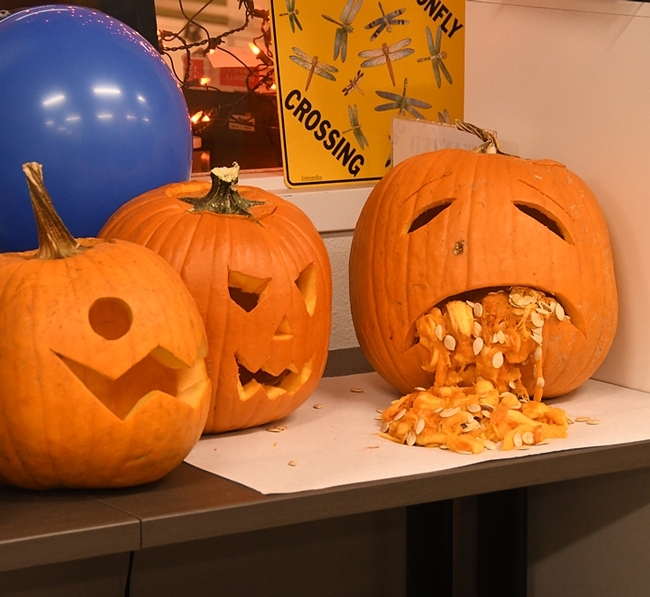
Not all pumpkins at the previous Bohart Museum Halloween parties focused on insects. (Photo by Kathy Keatley Garvey)
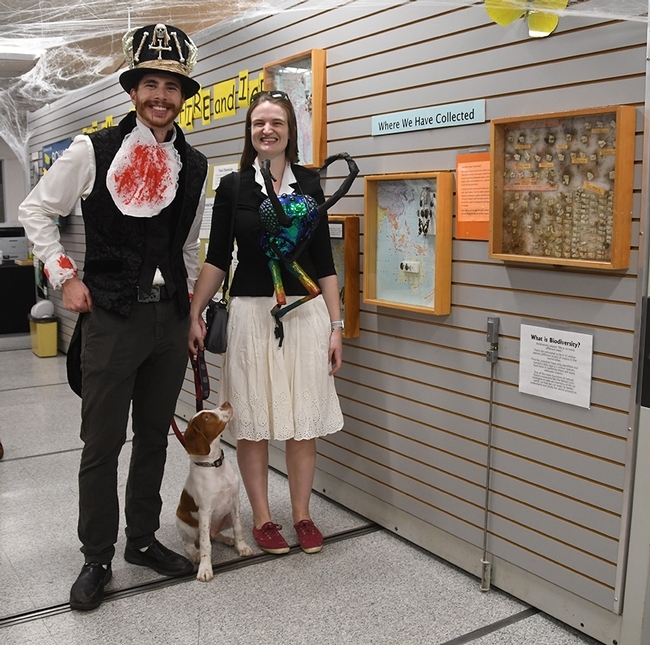
UC Davis entomology doctoral student Charlotte Herbert Alberts and husband George are a big part of the Bohart Museum Halloween parties. Both are artists as well. Charlotte studies with major professor Lynn Kimsey, director of the Bohart Museum of Entomology. With the couple: their Brittany spaniel, Westley. (Photo by Kathy Keatley Garvey)

Griffin, infant son of George and Charlotte Alberts, wasn't born in time for the 2019 Bohart Museum of Entomology Halloween party, but he's not missing out this year in family celebrations. He was born in April 2020. (Photo courtesy of George and Charlotte Alberts)
Squash Bees
California's squash crop was worth $30 million in 2015, this was second highest in the US. Eat your squash! It is a source of protein, vitamins A, B6, C, and K, thiamin, niacin, phosphorus, folate, magnesium, potassium, and fiber. Although growers rent honey bees for...
Free Webinars: Think of the ABCs in Pollination of Specialty Crops
Think of the ABCs: almonds, blueberries and cherries. Then think of watermelons and pumpkins. All those crops will be discussed in a series of free webinars on Ensuring Crop Pollination in U.S. Specialty Crops, set Jan. 24 through March 28. The webinars will feature five researchers with the...
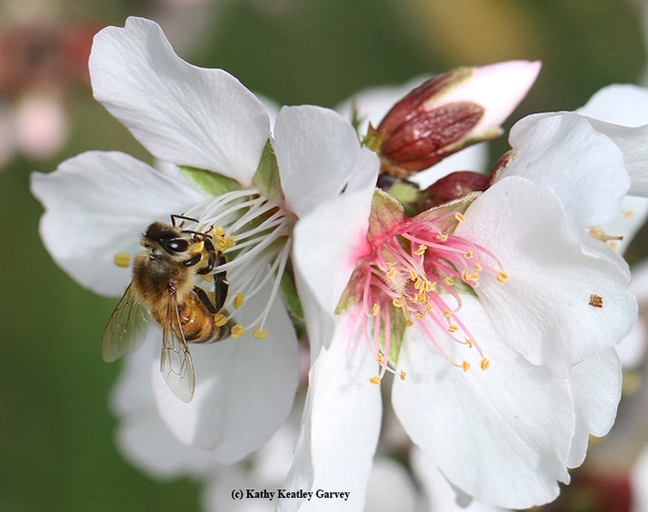
"A" is for almonds. A honey bee pollinating an almond blossom. (Photo by Kathy Keatley Garvey)
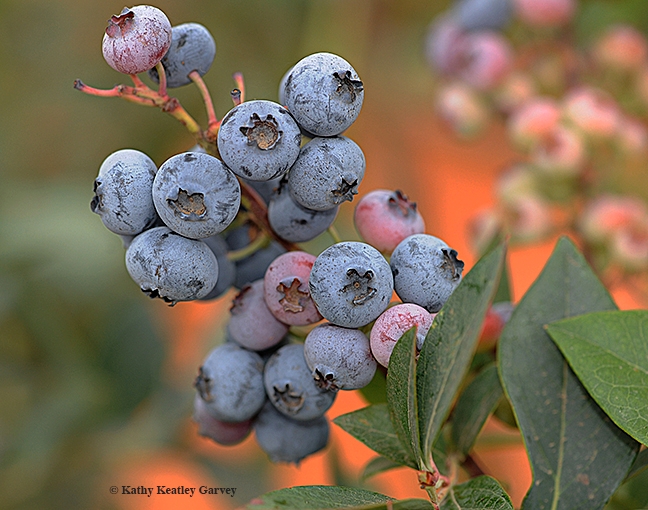
"B" is for blueberries. This is the result of bee pollination. (Photo by Kathy Keatley Garvey)
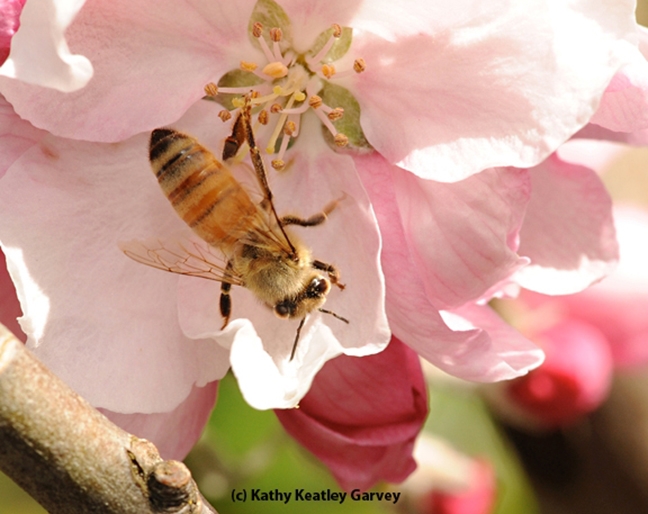
"C" is for cherries. A honey bee pollinating a cherry blossom.(Photo by Kathy Keatley Garvey)
Growing pumpkins is like a beauty pageant
Commercial pumpkin production poses many of the same challenges as growing other gourds and squash plants, like cucumbers, luffas, zucchini and watermelons, wrote Reid Fujii in the Stockton Record.
Growers must watch out for overwatering, plant diseases, and pests like squash bugs and cucumber beetles, said Brenna Aegerter, UC Cooperative Extension advisor in San Joaquin County.
"Like one of the growers here told me, it's a beauty pageant," Aegerter said. "It's all about how they look; it's not how they taste."
While other states produce more pumpkins than California, particularly those grown for canning and pumpkin pies, the Golden State harvests the largest volume for the retail, fresh market, Aegerter said.

San Joaquin County leads the state in pumpkin production.
California farms grow pumpkins for fun, not profit
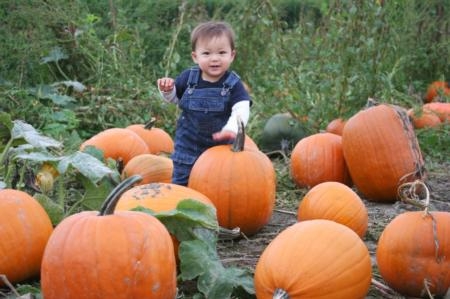
"Pumpkins are really different," said Tom Turini, a farm advisor with the University of California Cooperative Extension in Fresno. "We're not trying to feed the world pumpkins. It's more about tradition, family. It's farmers just having a little fun."
Fungal Killer of Cypresses Originated in California
John Upton, New York Times
Last month, scientists from UC Berkeley and the National Research Council in Italy reported that they traced Seiridium, the fungus that causes cypress canker disease, back to Monterey cypresses in California. The fungus has caused a deadly epidemic in the world’s forests.
According to the article, Matteo Garbelotto, a forest pathologist at Berkeley and a member of the team of scientists, said that the problem began roughly a century ago when landowners started planting Monterey cypress trees in the California Central Valley and in Europe. Outside of their natural environment, they became weakened and more susceptible to infection. As the trees’ immune systems grew weaker, the fungus grew stronger, until it prevailed.
